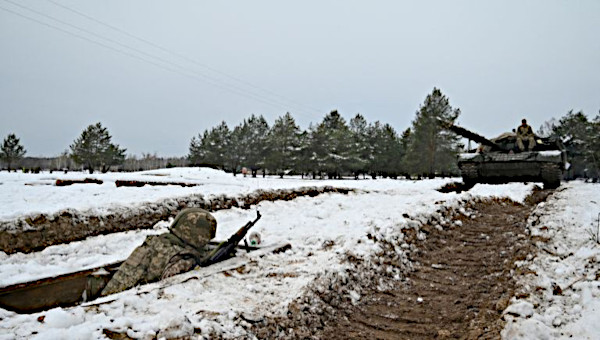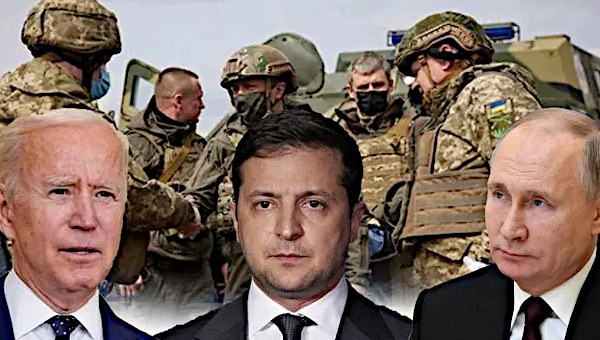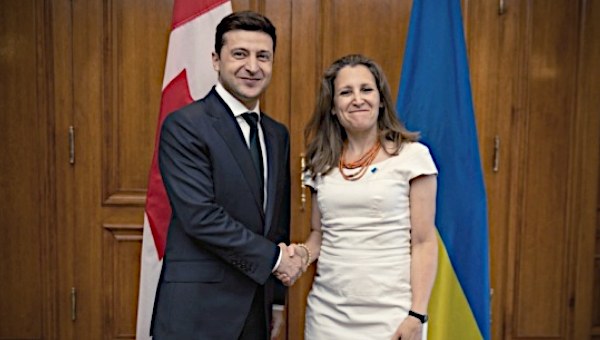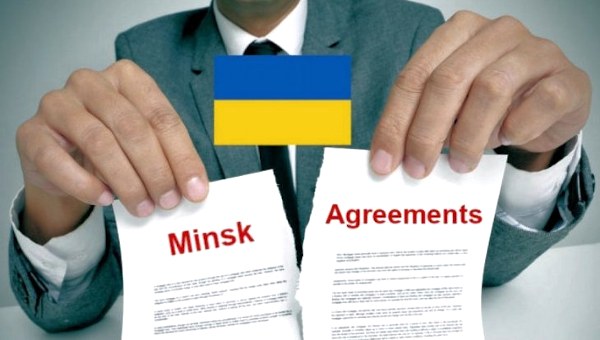Ukrainians Are Far From Unified on NATO: Let Them Decide for Themselves
After weeks of media scare about a purported Russian military invasion of Ukraine, the conflict may get a chance to be solved in a negotiated way. The public conversation on the current escalation of the Russian-Western conflict over Ukraine is, however, quite ironic. At least on the surface, it focuses on guarantees that Ukraine would not join the North Atlantic Treaty Organization (NATO) military alliance, which is not only far from inviting Ukraine to join but which most Ukrainians themselves do not want to enter.
Ukraine is not merely playing a secondary role in the exchange of threats and negotiations about its destiny. But in a typical colonial way, commentators are homogenizing Ukrainians and misrecognizing the political diversity in a country of 40 million people. Ukrainian President Volodymyr Zelensky recently tweeted about the principle “Nothing about Ukraine without Ukraine,” contrary to Russian President Vladimir Putin’s inclination to determine Ukraine’s membership in NATO in a narrow circle of Great Powers. However, the problem is not only deciding “without Ukraine” but also deciding “for” very diverse Ukrainians as if they held identical opinions on the critical issues in question.
A popular interpretation of the Euromaidan revolution contributes to this strategic disguise. As the story goes on, in 2014, Ukrainians from different regions, which merged into one modern state only during WWII, finally truly united in the civic inclusive nation born in the revolution. Ukrainians made their “civilizational choice” in favor of the Western geopolitical orientation and are defending it against Russian aggression, which is attempting to return Ukraine to its sphere of influence. The war in Donbas that followed in 2014 is presented as primarily an inter-state war and not a direct continuation of the violent civil conflict that started in the last days of Euromaidan even before any military moves by Russia.
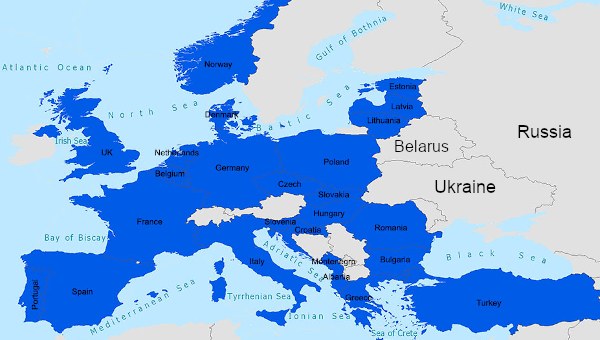
In reality, Euromaidan was a deficient revolution. It did not form any national unity, but the elite groups which benefited from it (together with ideological cheerleaders) need to sustain this illusion for internal and external legitimacy via combination of silencing and repression. It is, therefore, in their interest to paint the alternative positions on Ukrainian past, present and future as “non-Ukrainian” or even “anti-Ukrainian,” even though these positions are shared by many (if not most) Ukrainian citizens. As a result, these Ukrainians are more and more deprived of a voice in the domestic and international public spheres.
Ukraine has not simply turned into an object of the Great Powers’ play. In an especially humiliating way, Ukraine is exploited to cover imperialist interests and misrepresent them as a noble endeavor. The pathos-laden references to Ukraine’s sovereignty parallel the reality of the state, which is more dependent on foreign powers politically, economically and militarily than ever before since the Soviet collapse. Recognizing Ukraine’s diversity and shifting the discussion to the interests of Ukrainians is particularly imperative not only for immediate de-escalation of the conflict, but for any sustainable solution for Ukraine and the peace in Europe.
Do Ukrainians Want to Join NATO?
Russia is demanding ironclad guarantees that Ukraine (and other ex-USSR states) will not join NATO, and that NATO would not use the territory of these states for military expansion. The typical answer from Western officials and observers so far has been that it is for NATO and Ukraine to decide, not for Russia. Many Western commentators are obsessed with reading Putin’s mind: How he would react if not satisfied with a response to his ultimatums? They are mirrored by the viral symmetrical speculations on the opposite side whether Biden would be ready to strike a deal with Russia. Not so many are interested in what Ukrainians think about all this. Do Ukrainians actually want to join NATO?
Ukraine’s neutral status, which excludes it from entering any military blocs, was inscribed into the foundational documents of the modern Ukrainian state: the Declaration of Sovereignty (adopted July 16, 1990) and the Constitution of Ukraine (June 28, 1996). In December 2007, on the eve of the infamous Bucharest summit that settled that Ukraine and Georgia “will become members of NATO,” less than 20 percent of Ukrainian citizens supported joining NATO. The majority of Ukrainians were split between support for a military alliance with Russia or retaining the non-bloc neutral status.
NATO membership remained a cause of only a small minority within Ukrainian society until the tumultuous events of 2014. As a result of Russia’s annexation of Crimea and the start of the war in Donbas, support for NATO membership jumped up to about 40 percent. However, it was still not embraced by a majority of Ukrainians.
Two things contributed to this shift in public opinion. Some previously skeptical Ukrainians started to see NATO membership as a protection against further hostile actions from Russia. But no less important reason for the hike in support was that the surveys no longer included the most pro-Russian Ukrainian citizens from the territories not under Ukrainian government control – Crimea and Donbas. Millions of Ukrainian citizens have been effectively excluded from the Ukrainian public sphere.
In the rest of Ukraine, support for a military alliance with Russia sharply dropped since 2014. However, most of the former Russia supporters did not turn into supporters of NATO but switched to support for a neutral status, “plague on both of your houses” position. If you think about the seven years of military conflict, which is predominantly (mis)represented as the war with Russia, the reluctance to embrace NATO by a very large part of Ukrainians is amazing.
Before the elections of 2019, the previous Ukrainian president, Petro Poroshenko, pushed for changes to Ukraine’s constitution to put it on a path to join the European Union (EU) and NATO. It did not help to prevent his devastating defeat by Zelensky.
Support for NATO in Ukraine varies by region. A stable, solid pro-NATO majority exists only in the western regions. There is, perhaps, pro-NATO plurality in Central Ukraine. But in the eastern and southern regions, neutrality is more popular than NATO membership, despite the fact that this part of Ukraine would most probably be occupied in case of any real Russian invasion.
A correlation between support for NATO and different visions of Ukrainian national identity makes the issue especially divisive. Many Ukrainians see NATO as a defense from Russia. Many other Ukrainians feel that NATO membership would forfeit more of Ukraine’s sovereignty to the West, which they feel has been happening since 2014, and, at the same time, would increase tensions with Russia, escalate internal tensions among Ukrainians, and drag the nation in one of the US’s “forever” wars, one of which just recently ended in a humiliating defeat.
There is some evidence that the Russian military build-up in spring 2021 could increase support for NATO. It is quite probable that NATO supporters would win a potential referendum. However, such projections for the referendum are less valid to assess the preferences for Ukraine’s security strategy among Ukraine’s general population because they squeeze the choice to “yes” or “no” and do not cover millions of Ukrainian citizens in Donbas and Crimea who would not be able to vote at the referendum but have a strong opinion on the issue. Besides, it remains uncertain how Ukraine’s public opinion would react to very clear messages that the US excludes sending troops to fight Russia in case it attacks Ukraine and to any potential compromises in the course of negotiations with Russia.
While criticizing Putin’s demands to decide Ukraine’s membership between the Great Powers, it is important not to fall into a similar fallacy and dubiously impose the desire to join NATO on Ukrainians. Ukrainians are far from unified in support of NATO membership. It is a contentious issue that can only be properly resolved in a political process in which a large part of dissenting Ukrainians are not discarded and stigmatized by default as “traitors” or “stooges” of Russian propaganda for being skeptical about NATO for good reasons.
Way Out and Way Forward
The opposition segment may represent a large minority or sometimes even the majority of Ukrainian citizens, but it has been poorly mobilized and organized in comparison to the nationalist and neoliberal sections of civil society. The latter only expanded its pressure for their unpopular agendas on the weakened Ukrainian state. The radicalizing nationalist policies during Poroshenko’s rule were followed, in 2021, by the sanctions and threats by Zelensky targeting a leader of the popular opposition party, powerful oligarchs and most of the major opposition media. Despite human rights criticism, this did not provoke any significant public reaction from the West, unlike repression of the Russian and Belarusian opposition. Many observers accepted a lazy securitizing explanation that repression of allegedly “pro-Russian” forces is inevitable or even legitimate in the country under the foreign threat. However, further limitations on the political and public representation of a large segment of Ukrainian society does not make Ukraine stronger – only weaker and even more divided.
The Minsk Peace Accords, which require institutionalizing a special status for the breakaway territories in Donbas, could be an important part of the possible solution for Ukraine. They were signed after a series of defeats of the Ukrainian military in 2014-2015; however, little has been implemented since then. Noteworthy, even some supporters present it as an “unsavory compromise” with “Russia’s terms, imposed using armed aggression.”
However, it is important to understand the Minsk Accords as not something that Putin wants, but as a possible way toward a more democratic and pluralistic Ukraine that recognizes and accepts its own political diversity. Simultaneously, the Accords are both the ends and the means in this process. The Minsk Accords presuppose that the people in Donbas return as a legitimate part of the Ukrainian nation. Mostly they have very different opinions about the history and recent events, language policies, and international alliances than the nationalist political and civil society who speak on behalf of the Ukrainian society but only poorly represent its diversity. This would require a radical change of the dominant post-Euromaidan discourse in Ukraine’s public sphere and work toward a more inclusive definition of the national identity.
On the other hand, by returning the millions of Ukrainian citizens in Donbas back to Ukraine, the Minsk accords restore some of the lost balance (now institutionally protected) into Ukrainian politics that diverged from the attitudes and expectations of the general population. The Minsk accords simultaneously require and enable a substantive dialogue on Ukraine’s future.
There are risks, of course. There is a strong demand for peace in Ukrainian society, but specific clauses of the special status for Donbas (such as amnesty for combatants or institutionalizing separatist armed units as “people’s militia”) are not popular. However, the lack of majority support has never been the main reason for the Ukrainian government to evade implementing the Minsk Accords, as it has never been an obstacle to the campaign for NATO membership and even less popular nationalist and neoliberal policies. Importantly, despite that the Minsk accords were an outcome of the military defeats, most Ukrainians supported them right after their signing in 2015. If many Ukrainians are disappointed now, it is primarily because of the little progress and ineffectiveness in bringing peace to Ukraine, not because the accords are fundamentally unacceptable.
More important was the explicit threat of violence articulated by the nationalist civil society leading the so-called “anti-capitulation” protests. They were rather small and only 26 percent of Ukrainians expressed support for the protests, while 41 percent were clearly against them. Nevertheless, they stalled further progress in implementing the Minsk Accords after initial successes that followed Zelensky’s landslide victory in the 2019 election.
At stake, however, is not the “capitulation” of Ukraine, but of a very specific nation-building project for Ukraine, where Russia plays the role of the main “other,” against which the adepts of the project articulate their national identity. The problem with this project is that the attempted assimilation of Ukraine’s internal cultural and political diversity (to repeat the problematic path of how the modern Western nations were constructed since the 19th century) is incompatible with how many people see democracy today. Arguably, it is as incompatible as replay of the Great Power politics from the “golden age” of imperialism. However, this nation-building project is also hardly even feasible under the present conditions because it will not be supported by the parallel modernization processes. One cannot repeat the “turning peasants into Frenchmen” process nowadays because the Communist Party completed this task for Ukraine decades ago. It is no surprise that the fundamentally anti-Communist project of Ukrainian civil society has continuously failed to unify the nation, despite three revolutions in the life of one generation and supposedly mobilizing threat from abroad. So far, the attempts to push forward this nation-building project did not solve but rather intensified the deep post-Soviet crisis of political representation.
A different, pluralistic Ukraine developing in a more synthetic and dialogical way as a sovereign bridge between Europe and Russia is certainly possible. To get there, recognizing Ukraine’s political diversity and establishing conditions for institutionally protected national dialogue among Ukrainians with opposing views are vital. Whether it is really needed by anyone except Ukrainians is a different question. •
This article appeared in LeftEast.


